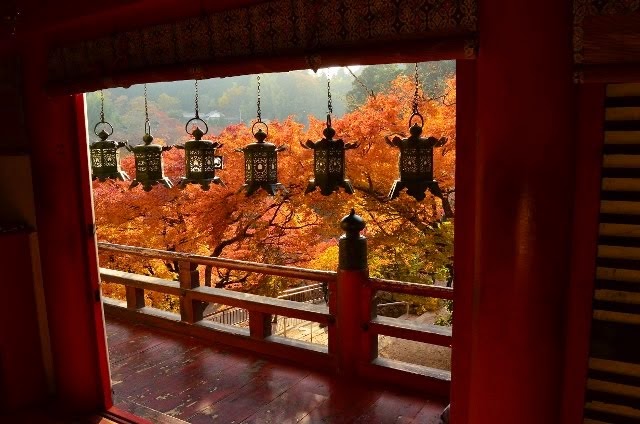Lotus came over from the Asian Continent to Japan in old days.
It has much to do with Buddhism. Lotus bear from muddy water and bloom clean,beautiful flowers. It symbolize wisdom and mercy of Buddha.
Lotus flower reminds me of a story for children of Japan. Lotus flower, mercy and wisdom of Buddha appear in the story.

The story begins like this " One day Buddha was walking around a lotus pond in heaven. All lotus flowers are pure white and there is sweet fragrance from the golden heart of lotus flower around there. It's just in the morning in heaven now and Buddha looked down from among lotus leaves in that pond. There is bottom of hell just far below lotus pond of heaven. So you can see clearly hell through the pond water like crystal.
Let me continue this story.
Buddha sees Kandata, who is so villain. He is struggling in hell with a lot of villains.
He has done only one good thing though he is a villain. He has helped life of a spider long ago. Remembering it, Buddha decides to get him heaven and hung a thread from heaven to hell in the far below.
Kandata starts to climb up the thread hardly. Keeping climbing the thread for long time, he looked down below accidentally. A large number of villains are climbing up the thread, following him.
He freezed because he thought the thread will be broken by weight of a large number of villains.
So he shouted at those followers loudly "This thread is for only me. Get down! Get down!"
Right after the shouting, the thread snaped at just a little upper part of his grip.
He and all villains fell down into the dark hell far below.
While here in heaven which is fragrant with lotus flowers.
Yes, this story is well-known " The thread" written by Akutagawa Ryunosuke.
47 stone image of Buddha are following lotus. Some kind of Buddha are engraved on stones
Here in Nara, many lotus flowers color World Heritage Site.
Lotus leaves shed raindrops well. Raindrops roll on lotus leaves as you know and fall down with dirt of leaves. So lotus leaves always clean though they are planted in muddy pond. This effect of self-cleaning is applied to the newest technique that guard roof or walls of buildings from dirt adhesion, according to a paper.
*
*
.Don't feel sick looking at this photo.
The eclosion of cicada.
It came out of below the earth on the next night after typhoon hit Japan. It's good the eclosion was not took place on the night of typhoon.
Splitting shell's back, it started to come out from the upper half of the body.
I found it at the stairs build by cement in our garden not trees at night.
Cicada live for 3or 17 years . This is longer life among insects. But cicada live only short period after coming out of below the earth. So it recalls sense of mortality to people in Japan before. Cicada representative of pathos.
While in China, cicada is symbol of revival, I heard.
After coming out all the body, it grabs the shell with its forelegs to stretch wings.
It took about 30 minutes from the upper picture to the bottom picture. And the next morning it had already flown away ,leaving the shell and it must be the one of them that are singing loudly in our garden now.
Thank you for visiting my blog.
Secretly : Mizutani small shrine among deep forest in Nara Park. Lotus Flowers are blooming near here,too.
Hello : We were met by him at Mizutani small shrine. They are hosts of the forest in Nara Park.












